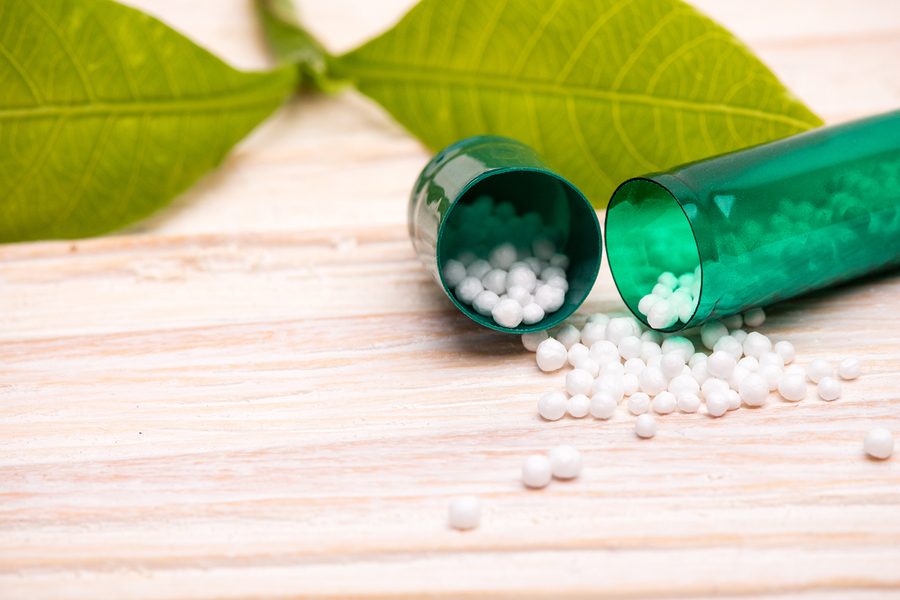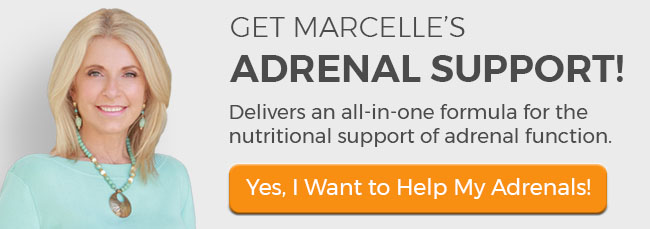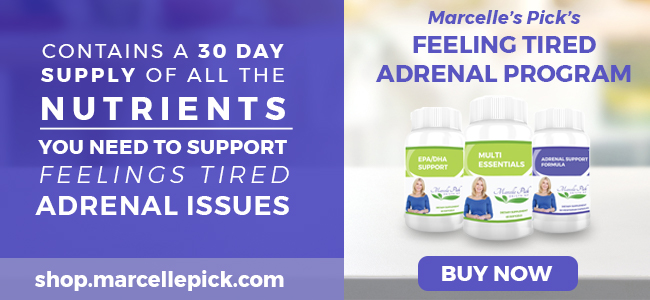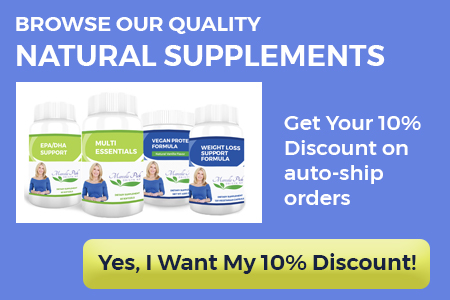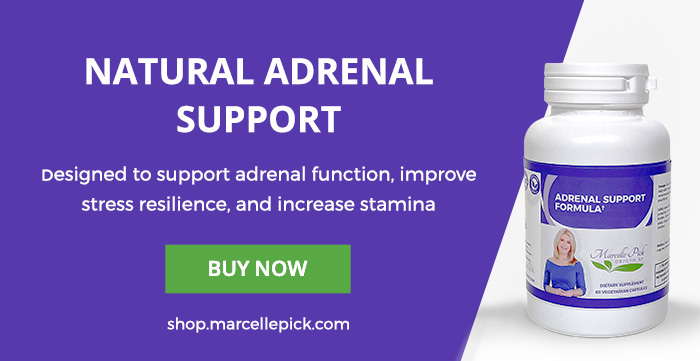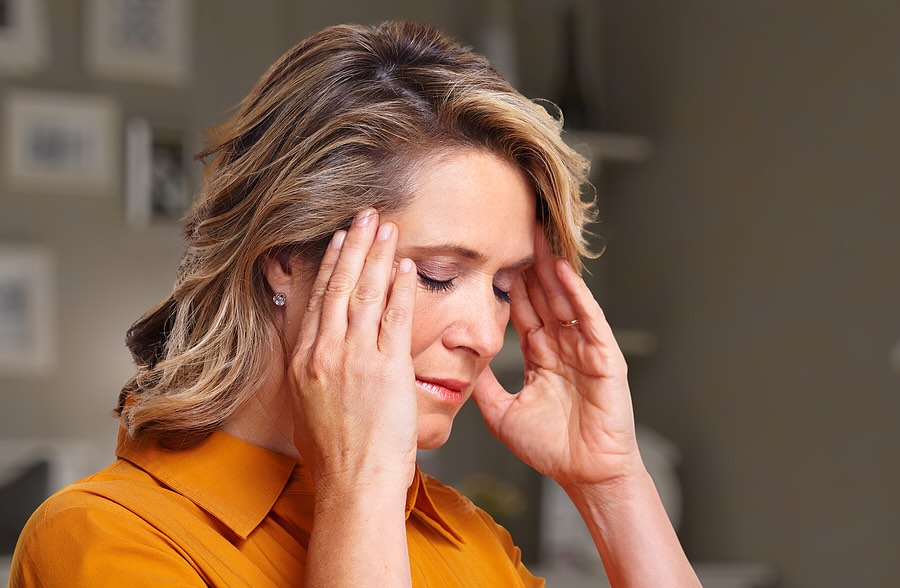Let me tell you a story about Lisa, a 28-year-old mom, who came to see me. She was so worn out from mothering two kids and working full-time she couldn’t get out of bed. Just driving to our practice took everything she had. I listened to her story, and recommended we test her adrenals. The results revealed severe adrenal imbalance and, as so often occurs in these cases, very low levels of an important hormone called DHEA.
DHEA is a natural steroid and precursor hormone produced by the adrenals. It’s also available at health food stores and online as an over-the-counter supplement. Manufacturers hype it as a magic cure-all for many things: muscle loss, weight loss, osteoporosis, and depression — even menopause. A few years ago headlines linked DHEA to athletes “doping” with steroids, leading to a lot of confusion about DHEA, it’s role in the body, and how it should be used. DHEA was labeled everything from “fountain of youth drug” to fraud – and the very real benefits of DHEA, particularly for women, got a little lost in all the controversy.
The truth is, for the women who need it, adrenal support with DHEA supplementation can make a big difference. I’ve seen it help patients get going again when they feel like they’ve hit rock bottom. But it’s never as simple as just popping a pill. When used appropriately — in a therapeutic setting under medical supervision — DHEA is a critical component to jumpstarting hormonal balance.
Just ask Lisa. After two months of treatment that included lifestyle changes and adrenal support with low daily doses of DHEA, she finally felt like herself again.
Let me give you more information about DHEA for women and its role in hormonal balance. Then you can talk to your healthcare professional and make the best choice for your individual needs.
What is DHEA?
Dehydroepiandrosterone, or DHEA, is a steroid hormone synthesized from cholesterol and secreted by the adrenal glands. The adrenals are walnut-sized glands located right above your kidneys. The average adult makes about 25 mg of DHEA per day (some more, some less) with dwindling production as we get older. Men at all ages have more DHEA than women.
Natural DHEA production is at its highest in your twenties: by the time we reach seventy we only make about 20% of the DHEA we had when we were young. A decline in DHEA with the passage of time is clearly what nature intended — and as far as we know, a healthy process. This is only one of the major reasons we don’t recommend self-prescribing DHEA through over-the-counter products.
Another reason is that DHEA for women is a very powerful precursor to all of your major sex hormones: estrogen, progesterone, and testosterone. (It’s molecular structure is closely related to testosterone). We call it the “mother hormone” — the source that fuels the body’s metabolic pathway.
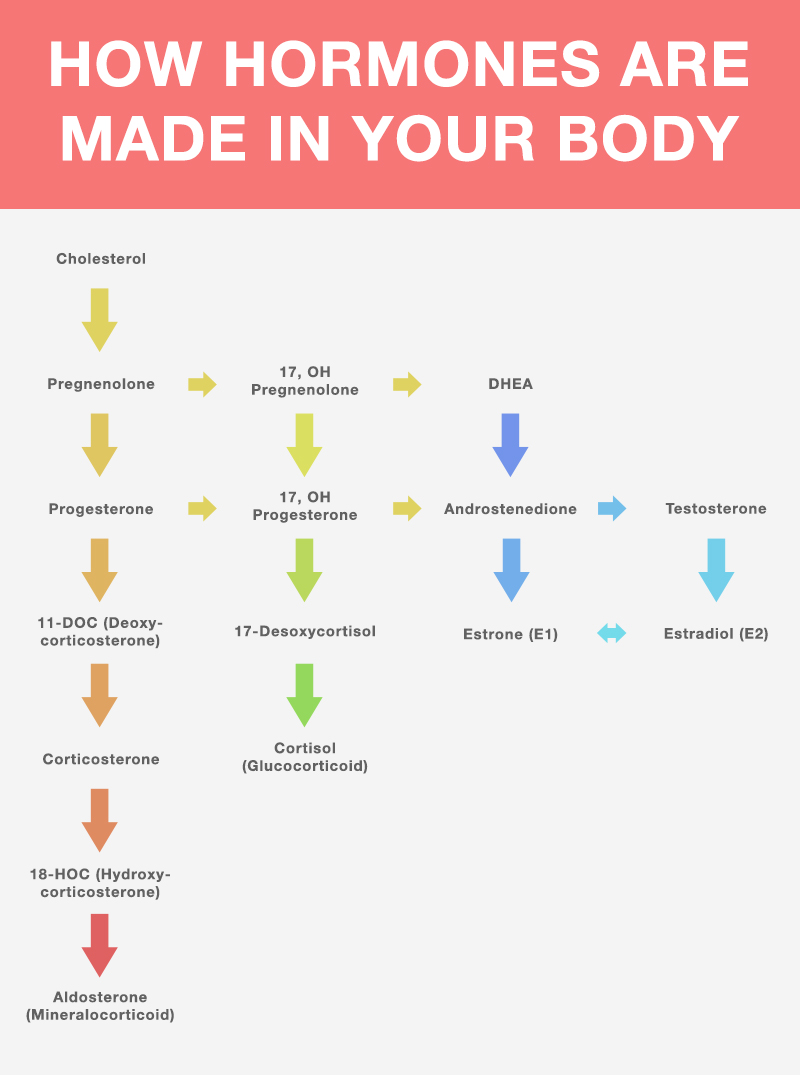
Besides DHEA, your adrenals also make the stress hormones cortisol and adrenaline. Adrenal exhaustion from coping with chronic stress — from (among other things) poor nutrition, yo-yo dieting, emotional turmoil, and job-related stress — means your adrenals are bone-tired from pumping out cortisol and they simply can’t manufacture enough DHEA to support a healthy hormonal balance. The end result? You feel tapped out, overwhelmed and, often, depressed.
It’s likely that DHEA for women and adrenal function are related to neurotransmitter-release rates, based on the mood elevation our patients report after just two weeks of adrenal support. But more research is needed to isolate the individual effects of DHEA from the hormones it gets metabolized into before we can know for sure what part it plays in all of this.
One thing we do know is that adequate levels of DHEA for women are needed to ensure your body can produce the hormones it needs when it needs them. In that balanced state your mood is stable and you feel clear-headed, joyful and vigorous. DHEA is the best “feel-good” hormone we know. And it works quickly and effectively when taken with the right combination of support.
When DHEA levels are low, your body does not have enough working material for proper endocrine function. This throws off your hormone production and you feel a general sense of malaise, along with other symptoms of hormonal imbalance. How severe these symptoms become depends on how many other demands are being made on your body at the same time.
There is a growing body of evidence that healthy levels of DHEA may help stave off Alzheimer’s disease, cancer, osteoporosis, depression, heart disease and obesity, but there is still no clearcut consensus. There may be some increased risks associated with DHEA for women with a history of breast cancer — all the more reason to take DHEA under medical supervision.
At our practice we use DHEA for women where we’ve seen reliable proof of efficacy — in cases of adrenal imbalance.
DHEA for Women and Adrenal Function
Your lifestyle, diet and stress levels all contribute to the amount of DHEA your body can produce in a given period. At our practice we look first and foremost at adrenal function, using DHEA levels as one of several diagnostic tools.
Think of our exhausted mother, Lisa. Like her, your adrenals work tirelessly to meet the demands placed on them until they are utterly tapped. Without adequate support, they spiral downward into adrenal imbalance and eventually adrenal exhaustion.
Most of the women we see at our practice — and I mean 99% — have some indication of adrenal imbalance, including symptoms of low DHEA levels, such as:
- Extreme fatigue
- Decrease in muscle mass
- Decrease in bone density
- Depression
- Aching joints
- Loss of libido
- Lowered immunity
But simply adding more DHEA to the equation is not the answer — despite what some of the popular products claim. DHEA alone can’t fix adrenal imbalance (don’t believe any product that says it will!), but it can be an important factor in a combination approach that includes hormonal and nutritional support, lifestyle changes, and proper rest.
Remember that DHEA is just one stop along the metabolic pathway — it doesn’t work in a vacuum. How it gets converted comes down to your individual biochemistry — some women may use it to make more estrogen, others may make more testosterone. Just throwing a pill into the mix without understanding the bigger picture is never a wise choice. Having too much DHEA, or converting DHEA into too much of one hormone and not enough of another, can be as upsetting to your body as not having enough.
DHEA for Women: A Delicate Hormonal Balance
So, you can’t look to DHEA supplementation as a stand-alone solution. It just doesn’t work that way. DHEA is one part of the whole concert of hormones at work every moment in your body. Before you tinker with that balance it’s a good idea to understand what is going on in your life on all levels — physiologically and emotionally.
After menopause or a hysterectomy, when your adrenals become the primary hormone factory, we see women in whom the ratio of DHEA that is converted into testosterone outweighs what’s converted into estrogen and progesterone. This can cause bouts of increased irritability and unusual body hair growth, especially when DHEA supplements are given without prior and follow-up testing of total and “free” testosterone levels.
“Free” testosterone is the portion of the hormone that is biologically active in your bloodstream. After menopause, a woman may have volatile levels of free testosterone at work, which accounts for some of the annoying male-pattern facial hair that’s common during the transition. Most doctors only test total testosterone levels, not the combined amount. Adding DHEA to this scenario can tip the scale drastically.
On the other hand, I’ve also seen patients who convert most of their DHEA into estrogen. In this case, DHEA supplements create a different kind of estrogen-progesterone imbalance with symptoms similar to PMS, including breast tenderness and mood swings. For more information, see our article about estrogen dominance.
Even though we’ve been trained in our culture to expect a one-size-fits-all drug cure for every health issue, ingesting a powerful hormone like DHEA can be unpredictable — and in some cases, risky. That’s why we advise our patients not to self-medicate.
The Trouble with Over-the-Counter DHEA Supplements
Nowadays you can buy DHEA over-the-counter as a matter of course in a confusing variety of doses and combinations. Most of these DHEA products are geared toward men, but I’m seeing more and more aimed at women.
The labels claim DHEA will help us lose weight, rev up our libido, lift depression and give us back the strength, immunity, and stamina we had when we were 20 — the age at which our bodies naturally produced the most DHEA. While on the surface this is appealing (who wouldn’t want to feel 20 again?), it’s obviously not what nature intended. We also don’t know enough about DHEA to be conducting such a large, unregulated public experiment. DHEA is a potent steroid — that’s why it made headlines and why it should be approached with due diligence.
Without a comprehensive medical test it’s impossible to know what your DHEA levels are. Just because you’re getting older doesn’t automatically mean you’re deficient. Remember, this is a natural substance — our bodies can produce more or less of it depending on our nutrient support, metabolism, hormonal balance, activity level and emotional state.
In fact, there are many studies that show you can improve your DHEA levels naturally by maintaining a body mass index of 19-25, getting adequate rest and exposure to sunlight, exercising regularly (including sexual activity), and fostering more “downtime” in your life — but more on that in a moment.
Also remember that any time you buy a supplement at a health food store, you have no guarantee that what you are buying is the real deal. There are few regulations in place to police the manufacturing process or the product itself. This is the reason we have formulated our own supplements, made specifically for us by a manufacturer who tests every single batch.
Many of the DHEA supplements I see at my local store have dosages that are way too high for most women (often as much as 20 times what I start my patients on!). While there’s no way to tell how much of that you might actually absorb, I think it’s especially unwise to experiment with DHEA for women at these levels without medical supervision.
Furthermore, taking DHEA alone won’t do any good if your adrenals are exhausted. There are too many other factors at work. You need to know the status of your adrenal function and your other hormones before you can even begin to know what kind of combination of support your body needs.
That being said, if you’ve been taking a DHEA enhanced product — don’t worry! Just call your doctor or medical practitioner and ask to get your hormones tested — then you will know how to proceed.
How We Test for DHEA at Our Practice
Saliva adrenal profiles can be used to look at DHEA along with cortisol levels. If I suspect adrenal imbalance, hormonal imbalance or a DHEA irregularity in a patient, I often order an adrenal panel. Using blood tests, I check estradiol in the follicular phase (usually days 3–9 of a menstrual cycle); progesterone in the luteal phase (days 14–28); DHEA-S; and both free and total testosterone levels. I like to see estrogen, progesterone, and DHEA for women in the upper quadrant of normal.
What many traditional medical practitioners consider normal is a little low in my opinion. I think there are many women who fall just shy of the bell curve in either direction, but still in the range of “normal” by current standards, who have legitimate health problems. And when such women go to a conventional practitioner feeling awful they are told that there’s nothing wrong.
But I don’t just go by the numbers. I always listen to how a woman is feeling, what demands she’s placing on her body — particularly her adrenals — and ask about her emotional state. Sometimes a woman can test normal by conventional standards and still need a slight, temporary boost.
What If You Need DHEA?
If tests indicate the need for DHEA supplementation, I start patients off with as little as 1-5 mg, under the tongue, two times per day. It’s possible to slowly increase the dosage if further tests warrant it, but I find I rarely need to use more than 10–12 mg sublingual per day — a physiological dose. We do not suggest any woman exceed 25 mg per day if capsule forms are used.
I use only pharmaceutical-grade DHEA compounded by a reputable pharmacy. That way I can be confident that what I’m prescribing is actually what the patient will get. The kind I use comes in liquid sublingual drops — I prefer them to tablets. If your doctor is unaware of a reliable compounding pharmacy in your area, log in to the International Academy of Compounding Pharmacists website to access their referral service.
Once a patient is taking DHEA, I closely monitor how she is metabolizing the hormone through regular tests and face-to-face check-ups. Many women don’t need to take DHEA for an extended period of time — once our bodies return to balance and we make lifestyle changes, we’re usually more than capable of making what we need.
Many of my patients in menopause who are taking bioidentical hormones also take DHEA to promote a good overall balance and vice-versa. DHEA can be a great bridge through menopause. Again, once balance has been restored and symptoms even out, most women produce enough DHEA on their own.
That brings me to the point I most want to make about DHEA for women — it’s connection to joy.
The Best Way to Make More DHEA: Cultivate Joy
As I said before, DHEA is just one small part of a much larger picture — one that you can exert considerable influence over. Our bodies produce DHEA all the time. And it’s possible to measurably boost your body’s own production of DHEA naturally.
Some studies show that people with a positive outlook actually create a self-sustaining cycle of DHEA production: they produce more DHEA, which may affect their levels of serotonin (the happy neurotransmitter; for more about this, see our articles about antidepressants), which in turn gives them a better outlook — which ups DHEA and so on.
One proven way to boost levels of DHEA naturally is to find ways to cultivate joy in your life. This can mean different things to different people but overall there are some common threads when weaving this web of joy:
- Connection. Human beings are social creatures — we like companionship. Connecting with family and friends in a healthy, loving way is one of the best joy-makers around. Think long and hard about what you like to do for pleasure and reach out. Join a local class or group that shares your interest.
- Exercise. Moving your body, even through deep breathing and mild stretching, reduces stress, oxygenates your cells, and boosts mood-elevating substances in your bloodstream called endorphins. This process can actually change your body chemistry for the better. Meditation is also useful in this way.
- Spirituality. The ability to entertain the idea of some sort of larger power, be it natural or divine, is a powerful component of joy. Rituals of worship and contemplation, from a walk in the woods to yoga to prayer, helps us make space in our busy lives to focus on what is truly meaningful to us and who we really are.
- Play. Is it a coincidence that our levels of DHEA decline as we enter the grown-up world of work and responsibility? Who knows? It would be interesting to find out. But one thing is certain: playtime shouldn’t be just for kids. Sometimes I actually have to write out a prescription that reads PLAY so a patient can have fun without guilt. You too have my medical permission: go out and play. Kick up your heels — it’s good for your health!
I know none of this is easy to do in today’s non-stop world. Everything around us pushes us to have more, do more, be more — is it any wonder our bodies eventually throw up a huge stop sign? The best time to foster hormonal balance, adequate DHEA levels, and healthy adrenals is before you hit that stop sign. So give yourself a time-out and check-in. You may find, with a little help, your body and mind are more than capable of taking care of themselves.
Final Thoughts on DHEA for Women
Feelings of health and well-being are never static. Like all things natural, they depend on a kaleidoscope of moving parts — always changing, always unique. DHEA for women is just one part of this evolving pattern, one you can influence to create a better picture by changing your lifestyle and taking care of your adrenals. For more on this, read our many articles in our Adrenal Health section.
As with all things concerning your body, your mind, and your health, I hope you’ll learn as much as you can about yourself and find a medical practitioner you can talk openly with. DHEA for women should never be taken casually or unsupervised, but it’s benefits are real for the women who need it — as are the physiological benefits of cultivating joy. I encourage you to embrace the possibilities inherent in both!


